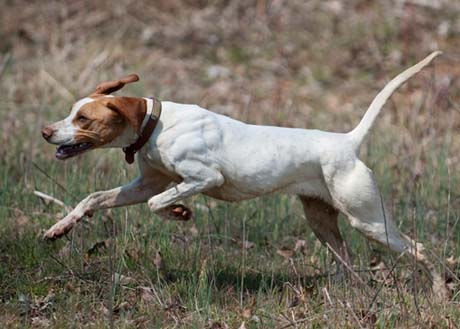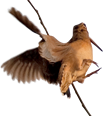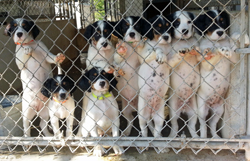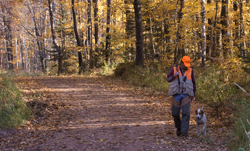Speed and scenting

Ears flying, Northwoods Vixen (CH Westfall’s Black Ice x Northwoods Prancer, 2011) shows plenty of speed. Photo by Chris Mathan.
A dog that covers a great deal more country sure speeds the process of finding these (ruffed grouse) birds, whatever the density.
~ Gordon Gullion
Basically, I agree with Gullion. But I would add that a dog’s range isn’t nearly as important as its speed. To cover more ground in a given period of time, a dog needs to be fast.
And there’s one more piece. Speed just carries the dog to likely areas. It’s the nose that finds birds. A dog must have a nose capable of scenting birds before they’re passed or flushed.
In other words: I think a bird dog should run at 10 mph but have a 15-mph nose.
As the 10-mph dog with the 15-mph nose detects game, it shifts gears from a fast, searching speed to a slower, intense pace. Its body becomes rigid as it checks and follows scent. Its pointing posture is usually well balanced and composed and often one foot is raised in the classic style.
Another type of dog hunts at 15 mph but has 10-mph nose. I call this a “whack” pointer. The dog never seems to slow down and make game; instead it slams into point from a full-speed run. Often, it ends up in a twisted or crouched posture. Unfortunately, and just as likely, this dog will miss the bird or bump it.
How fast should a bird dog hunt? My answer: fast enough. The dog should hunt fast enough to cover as much ground as possible but not so fast as to outrun its nose.




